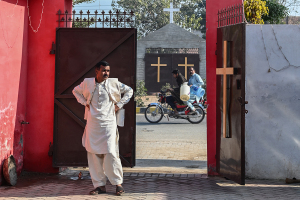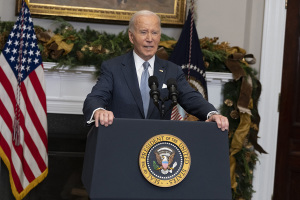Abstinence Targeted in Teen Pregnancy Report
Opponents have again begun assailing abstinence education following the release of a report that shows an increase in teen birth and abortion rates for the first time in more than a decade.
Between 2005 and 2006, teen pregnancy among 15- to 19-year-olds increased 3 percent, to 71.5 pregnancies per 1,000 women. This ended a 15-year decline. The teenage abortion rate rose 1 percent in 2006 to 19.3 abortions per 1,000 women.
The Guttmacher Institute, which released the report on Tuesday, insists the rise is a result of steep declines and a subsequent plateau in contraceptive use in the early 2000s and the widespread abstinence-only sex education programs that were promoted under the Bush administration.
"After more than a decade of progress, this reversal is deeply troubling," said Heather Boonstra, Guttmacher Institute senior public policy associate, in the report. "It coincides with an increase in rigid abstinence-only-until-marriage programs, which received major funding boosts under the Bush administration. A strong body of research shows that these programs do not work."
One pro-life group, however, is pointing the finger at the abortion industry, particularly Planned Parenthood, for the rise.
American Life League cites teen pregnancy rates prior to 1990 (when the rate was at its peak), pointing out that they were increasing just about every year "as Planned Parenthood's sex-ed programs dominated public and even private school sex-education courses."
The group also claims that teen pregnancy rates began to fall in the early 1990s when "it became popular to teach the abstinence message to teens and preteens."
ALL further makes its case, arguing that by 2000 Planned Parenthood began lobbying various states to refuse abstinence money and reduce abstinence programs. Thus in 2006, the teen pregnancy rate increased for the first time in 15 years.
"This is not rocket science," said Jim Sedlak, vice president of American Life League. "When you don't tell kids to remain abstinent, they have more sex and more of them get pregnant. Pregnancy rates go down when kids don't have sex."
A southern California youth pastor, who has come across teen pregnancy in his own youth group and is well aware of the problem, believes abstinence talks are critical. But a one-time purity message or purity pledge isn't the recipe for preventing teens from engaging in sexual activity.
Jim Britts, youth pastor at Newsong Church in Oceanside, Calif., and screenwriter of "To Save a Life," has been speaking to students about abstinence for the past six years. He and a team from the local Pregnancy Resource Center address the physical, emotional and relational (and spiritual at Christian schools) reasons why they should seriously consider waiting to have sex until marriage.
He has learned that teens need accountability.
"If we think students can just hear the message once and then never be tempted again then we are fooling ourselves," he told The Christian Post. "We need students to not only make a commitment but also set them up to succeed in tempting situations."
When addressing Christian students, Britts drives in a particularly stirring message.
"For Christian teens they really need to know the seriousness of sinning sexually," he said. "I Corinthians 6 says that when we sin sexually we are actually forcing Christ into a sexual relationship against his desire. In our culture when we force someone into a sexual relationship we call that rape. If Christian teens got that picture I think it would take this commandment much more seriously."
The highest teenage pregnancy rates, according to the Guttmacher Institute, were in New Mexico, Nevada, Arizona, Texas and Mississippi. Meanwhile, the lowest rates were in New Hampshire, Vermont, Maine, Minnesota and North Dakota.
Among some of the more positive findings from the Guttmacher Institute report, the proportion of teenage pregnancies ending in abortion declined almost one-third, from 46 percent to 32 percent.





























